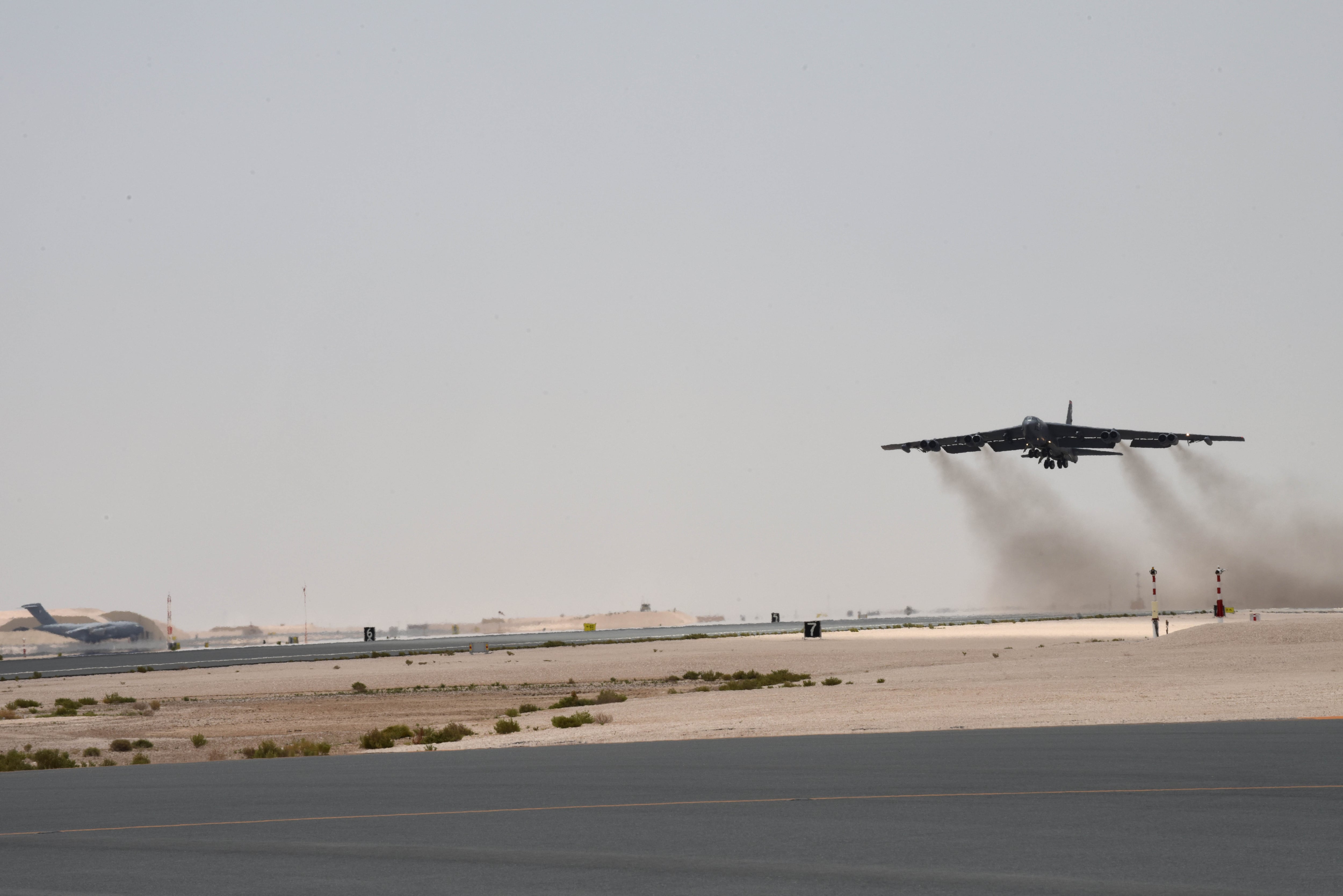The Air Force began flying deterrence missions in the Middle East Saturday, aimed at what the Pentagon has called threats from Iran.
B-52H Stratofortress bombers from the 20th Expeditionary Bomb Squadron at Barksdale Air Force Base, Louisiana, touched down at Al Udeid Air Base, Qatar, Thursday, according to Air Force Central Command.
Air Force F-15C Eagles also flew deterrence missions on Saturday and were refueled by a KC-135 Stratotanker from the 28th Expeditionary Aerial Refueling Squadron at an undisclosed location. The 28th EARS maintains a presence across AFCENT’s area of responsibility, including in Iraq, Syria, and Afghanistan.
The F-15Cs deployed to an undisclosed location in the Middle East on Wednesday. F-35A Lightning IIs are also in theater.
“We will not discuss mission specifics," said Air Force Maj. Holly Brauer, an AFCENT spokesperson. "They have begun flying deterrence missions in the region, including over the Arabian Gulf.”
Officials have not provided a timeline for the B-52 task force’s deployment.

The deployment of the bombers, as well as a Patriot missile battery, aircraft carrier strike group and amphibious transport dock, come after the Pentagon said it received "clear indications” of threats from Iran to U.S. forces in the Middle East through Iranian military and proxy forces.
Defense officials have so far declined to comment on the record regarding the exact nature of the Iranian threat allegedly posed against U.S. forces.
“It’s important that Iran understand that an attack on Americans or our interests would be met with an appropriate response," Shanahan told reporters Friday. "We are in the Middle East to defeat terrorism, fight for security, the clandestine insurgencies are really what we are there to address but we will protect ourselves and that’s very important.”
The chief of Iran’s Islamic Revolutionary Guard Corps called the deployment of U.S. aircraft and vessels a form of “psychological war in the region,” adding that the “comings and goings of their military is a normal matter,” according to the Iranian ISNA news agency.
The U.S. does frequently have bombers and aircraft carriers in the region. B-1 bombers replaced B-52 bombers in the Middle East about this time last year.
Although the U.S. Navy no longer has a permanent carrier presence in the region, its vessels are frequently scheduled to transit the Arabian Sea, the Persian Gulf and other major bodies of water.

The increased tensions in the region come as Washington has ratcheted up sanctions against Iran in the last month by ending waivers that allowed the export of Iranian oil to certain countries. Iran has warned that it may fully exit the existing nuclear deal, although the U.S. withdrew from the agreement one year ago.
European allies have voiced concern that the tensions could accidentally trigger a regional conflict, while urging Iran to remain in compliance with the nuclear deal.
“We are very worried about a conflict, about the risk of a conflict ... of an escalation that is unintended,” British Foreign Secretary Jeremy Hunt told Reuters.
Amid the rising tensions, President Donald Trump has urged Iranian President Hassan Rouhani to call him, according to Al-Monitor.
“What they should be doing is calling me up, sitting down,” Trump said. “We can make a deal, a fair deal.”
Rouhani has called the external pressure on his country “unprecedented.”
“The pressures by enemies is a war unprecedented in the history of our Islamic revolution ... but I do not despair and have great hope for the future and believe that we can move past these difficult conditions provided that we are united,” Iran’s state news agency IRNA quoted Rouhani as saying.
Kyle Rempfer was an editor and reporter who has covered combat operations, criminal cases, foreign military assistance and training accidents. Before entering journalism, Kyle served in U.S. Air Force Special Tactics and deployed in 2014 to Paktika Province, Afghanistan, and Baghdad, Iraq.




